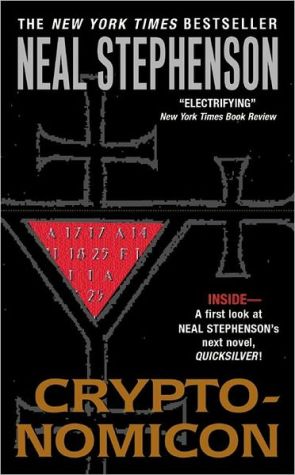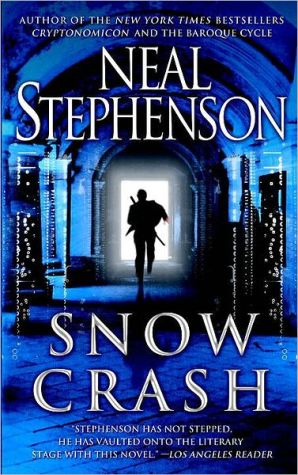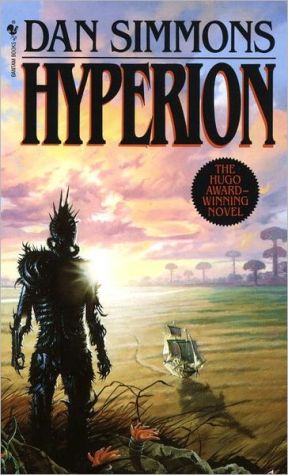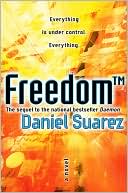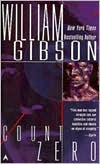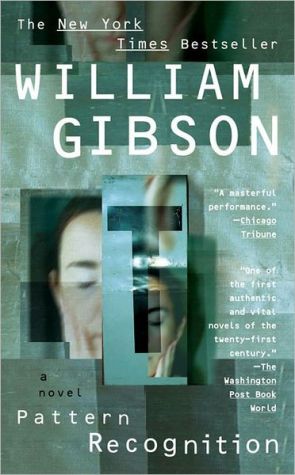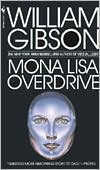Cryptonomicon
With this extraordinary first volume in what promises to be an epoch-making masterpiece, Neal Stephenson hacks into the secret histories of nations and the private obsessions of men, decrypting with dazzling virtuosity the forces that shaped this century.\ In 1942, Lawrence Pritchard Waterhouse — mathematical genius and young Captain in the U.S. Navy — is assigned to detachment 2702. It is an outfit so secret that only a handful of people know it exists, and some of those people have names...
Search in google:
-book extras: "Stephensonia/Cryptonomica": ONE: "Cryptonomicon Cypher-FAQ" (Neal addresses "Frequently Anticipated Questions" and other fascinating facts); TWO: "Mother Earth Motherboard" (Neal's landmark nonfiction account of, among other techno-feats, the laying of the longest telecommunications cable on earth); THREE: "Press Conference"Minneapolis Star TribuneThere is a scope here, a wildness, that you rarely find in fiction today. Buckle up.
Chapter One\ \ Barrens\ \ Let's set the existence-of-God issues aside for a later volume, and just stipulate that in some way, self-replicating organisms came into existence on this planet and immediately began trying to get rid of each other, either by spamming their environments with rough copies of themselves, or by more direct means which hardly need to be belabored. Most of them failed, and their genetic legacy was erased from the universe forever, but a few found some way to survive and to propagate. After about three billion years of this sometimes zany, frequently tedious fugue of carnality and carnage, Godfrey Waterhouse IV was born, in Murdo, South Dakota, to Blanche, the wife of a Congregational preacher named Bunyan Waterhouse. Like every other creature on the face of the earth, Godfrey was, by birthright, a stupendous badass, albeit in the somewhat narrow technical sense that he could trace his ancestry back up a long line of slightly less highly evolved stupendous badasses to that first self-replicating gizmo-which, given the number and variety of its descendants, might justifiably be described as the most stupendous badass of all time. Everyone and everything that wasn't a stupendous badass was dead.\ As nightmarishly lethal, memetically programmed death-machines went, these were the nicest you could ever hope to meet. In the tradition of his namesake (the Puritan writer John Bunyan, who spent much of his life in jail, or trying to avoid it) the Rev. Waterhouse did not preach in any one place for long. The church moved him from one small town in the Dakotas to another every year or two. It is possible that Godfreyfound the lifestyle more than a little alienating, for, sometime during the course of his studies at Fargo Congregational College, he bolted from the fold and, to the enduring agony of his parents, fell into worldy pursuits, and ended up, somehow, getting a Ph.D. in Classics from a small private university in Ohio. Academics being no less nomadic than Congregational preachers, he took work where he could find it. He became a Professor of Greek and Latin at Bolger Christian College (enrollment 322) in West Point, Virginia, where the Mattaponi and Pamunkey Rivers came together to form the estuarial. James, and the loathsome fumes of the big paper mill permeated every drawer, every closet, even the interior pages of books. Godfrey's young bride, nee Alice Pritchard, who had grown up following her itinerant-preacher father across the vastnesses of eastern Montana-where air smelt of snow and sage threw up for three months. Six months later she gave birth to Lawrence Pritchard Waterhouse.\ The boy had a peculiar relationship with sound. When a fire engine passed, he was not troubled by the siren's howl or the bell's clang. But when a hornet got into the house and swung across the ceiling in a broad Lissajous, droning almost inaudibly, he cried in pain at the noise. And if he saw or smelled something that scared him, he would clap his hands over his ears.\ One noise that troubled him not at all was the pipe organ in the chapel at Bolger Christian College. The chapel itself was nothing worth mentioning, but the organ had been endowed by the paper mill family and would have sufficed for a church four times the size. It nicely complemented the organist, a retired high school math teacher who felt that certain attributes of the Lord (violence and capriciousness in the Old Testament, majesty and triumph in the New) could be directly conveyed into the souls of the enpewed sinners through a kind of frontal sonic impregnation. That he ran the risk of blowing out the stained-glass windows was of no consequence since no one liked them anyway, and the paper mill fumes were gnawing at the interstitial lead. But after one little old lady too many staggered down the aisle after a service, reeling from tinnitus, and made a barbed comment to the minister about the exceedingly dramatic music, the organist was replaced.\ Nevertheless, he continued to give lessons on the instrument. Students were not allowed to touch the organ until they were proficient at the piano, and when this was explained to Lawrence Pritchard Waterhouse, he taught himself, in three weeks, how to play a Bach fugue, and signed up for organ lessons. Since he was only five years old at the time, he was unable to reach both the manuals and the pedals, and had to play standing-or rather strolling, from pedal to pedal.\ When Lawrence was twelve, the organ broke down. That paper mill family had not left any endowment for maintenance, so the math teacher decided to have a crack at it. He was in poor health and required a nimble assistant: Lawrence, who helped him open up the hood of the thing. For the first time in all those years, the boy saw what had been happening when he had been pressing those keys.\ For each stop-each timbre, or type of sound, that the organ could make (viz. blockflöte, trumpet, piccolo)-there was a separate row of pipes, arranged in a line from long to short. Long pipes made low notes, short high. The tops of the pipes defined a graph: not a straight line but an upward-tending curve. The organist/math teacher sat down with a few loose pipes, a pencil, and paper, and helped Lawrence figure out why. When Lawrence understood, it was as if the math teacher had suddenly played the good part of Bach's Fantasia and Fugue in G Minor on a pipe organ the size of the Spiral Nebula in Andromeda-the part where Uncle Johann dissects the architecture of the Universe in one merciless descending ever-mutating chord, as if his foot is thrusting through skidding layers of garbage until it finally strikes bedrock. In particular, the final steps of the organist's explanation were like a falcon's dive through layer after layer of pretense and illusion, thrilling or sickening or confusing depending on what you were. The heavens were riven open. Lawrence glimpsed choirs of angels ranking off into geometrical infinity.\ The pipes sprouted in parallel ranks from a broad flat box of compressed air. All of the pipes for a given note-but belonging to different stops-lined up with each other along one axis. All of the pipes for a given stop-but tuned at different pitches-lined up with each other along the other, perpendicular axis. Down there in the flat box of air, then, was a mechanism that got air to the right pipes at the right times. When a key or pedal was depressed, all of the pipes capable of sounding the corresponding note would speak, as long as their stops were pulled out.\ Mechanically, all of this was handled in a fashion that was perfectly clear, simple, and logical. Lawrence had supposed that the machine must be at least as complicated as the most intricate fugue that could be played on it. Now he had learned that a machine, simple in its design, could produce results of infinite complexity.\ Stops were rarely used alone. They tended to be piled on top of each other in combinations that were designed to take advantage of the available harmonics (more tasty mathematics here!). Certain combinations in particular were used over and over again. Lots of blockflötes, in varying lengths, for the quiet Offertory, for example. The organ included an ingenious mechanism called the preset, which enabled the organist to select a particular combination of stops-stops he himself had chosen-instantly. He would punch a button and several stops would bolt out from the console, driven by pneumatic pressure, and in that instant the organ would become a different instrument with entirely new timbres.\ The next summer both Lawrence and Alice, his mother, were colonized by a distant cousin-a stupendous badass of a virus. Lawrence escaped from it with an almost imperceptible tendency to drag one of his feet. Alice wound up in an iron lung. Later, unable to cough effectively, she got pneumonia and died.\ Lawrence's father Godfrey freely confessed that he was not...\ Cryptonomicon. Copyright © by Neal Stephenson. Reprinted by permission of HarperCollins Publishers, Inc. All rights reserved. Available now wherever books are sold.
\ From Barnes & NobleThe Barnes & Noble Review\ Neal Stephenson's latest novel, Cryptonomicon, is an immense and extraordinary tale that unwinds with all the stylistic grandeur his fans have come to expect. With Cryptonomicon, the reader is quickly plunged into a bizarre, breakneck-paced story that interweaves World War II code making and code breaking with computerized global corporate takeovers, one that melds elements of Catch-22, A Man Called Intrepid, and a hefty dose of cyberpunk reality. Stephenson leaves behind the science fiction worlds of his previous novels — Snow Crash and The Diamond Age — to depict the madness involved in many of World War II's top-secret missions and to offer a view of how 1940s cryptography eventually led to technological developments in the world of computers. \ Lawrence Pritchard Waterhouse, a brilliant mathematician at Princeton, is eventually lured away from luminous fellow students Alan Turing and Rudy von Hacklheber and enters the U.S. Navy. There he is considered so dim that he's only given the task of playing the glockenspiel in the Navy band. After the disaster of Pearl Harbor, however, Waterhouse's skills as a cryptoanalyst are finally noticed, and he's immediately sent to Bletchley Park, England, the base of the Allied code-busting operations. The "unbreakable" German code, Enigma, has been cracked, and the Allies want to use their newfound information without alerting the Germans and Japanese to the fact that their plans are no longer secret. It's Waterhouse's job, as a member of the ultra-secret Detachment 2702, to make all oftheAllied actions from this point on look "randomized," so that the Axis powers won't realize Enigma has been broken.\ Paired up again with Turing, who is on his way to developing the first computer, Waterhouse learns that their old friend Rudy is now the chief German cryptographer. Waterhouse's insight into the peculiarities of fellow mathematicians might allow him to stay one step ahead of the enemy. Meanwhile, U.S. Marine Raider Bobby Shaftoe, a survivor of Guadalcanal and a generally unstable personality, is brought in to make contrived events appear to be genuine. His missions include putting corpses into wet suits with fake documentation and flying into the heart of enemy territory. He's left in the dark as to the details of Detachment 2702's work, but that's what he's come to expect from his superiors.\ When the novel shifts to the present, Waterhouse's grandson, Randy, an Internet commando and computer genius, is trying to make a bundle of money by setting up a so-called data haven in the Philippines, along with his paranoid partner, Avi. They envision a place where all data is safe from government interference, corporate attack, or hacker assault. Randy eventually hooks up with Bobby Shaftoe's granddaughter, Amy (short for America), who is interested in helping Randy lay deep-sea cable between the islands and make whatever she can from this new enterprise. In this area of the ocean floor, there is a sunken German submarine that carries the still undeciphered Axis code named Arethusa; investigated in the past by Waterhouse and Shaftoe, the code is eventually nabbed by Randy and America. The pair must outwit their nemesis, a wealthy, calculating criminal called the Dentist, and do whatever they can to decipher Arethusa and stay alive in the meantime.\ Told in present-tense narratives from three points of view — those of Waterhouse, Bobby Shaftoe, and Randy — the overall story arcs, bops, and weaves in an engrossing and challenging way. The shifts between plots and timelines are abrupt but engaging, and the style is flashy, cool, and sharp. The author's stylistic pyrotechnics are never so blinding or distracting that the reader can't appreciate the skill of his craftsmanship. The characters are credible, if extreme, and are often placed in situations that are funny, exciting, outrageous, but believable. Here we see how mathematics can consume our brightest scholars to the point where they can barely function in the world and how, for them, even a look out the window at the city of London isn't a real view but a chance to graph and chart the ratios of building heights. Stephenson's juxtaposition of the real world with a virtual world of unseen numbers and equations adds a sense of near-fantasy to the work.\ Despite his many forays into deeply technical jargon, Stephenson never takes on a lecturing tone — more often than not, such romps are meant to underscore the mathematician's character traits to humorous effect. Case in point: Waterhouse and Turing go into several pages' worth of equations to figure out the probability of when the chain will fall from Turing's bike. Stephenson's snappy, hip delivery adds new bombastics to the World War II scenery, and as past and present are blended into a single story thread, the reader discovers a genuinely diverting and wholly entertaining experience. Cryptonomicon is a must-read, don't-miss extravaganza that the world will be talking about for years to come.\ —Tom Piccirilli\ Tom Piccirilli is the author of eight novels, including Hexes, Shards, and his Felicity Grove mystery series, consisting of The Dead Past and Sorrow's Crown. Tom divides his time between New York City and Estes Park, Colorado.\ \ \ \ \ \ Minneapolis Star TribuneThere is a scope here, a wildness, that you rarely find in fiction today. Buckle up.\ \ \ Wall Street JournalSuspenseful...moves along at such a fantastic clip.\ \ \ \ \ New York PostStephenson's new book proves that he is the rarest of geniuses.\ \ \ \ \ Seattle Post IntelligencerA powerfully imagined story revolving around a vast conspiracy affecting history and different generations in one family who attempt to unravel its secrets.\ \ \ \ \ Locus...[E]normous and exhilarating....[I]f a noveleven as brilliant and sheerly enjoyable as this oneplays all the tunes but never quite turns the pageis it SF or non-SF SF? Or is it something new entirely?\ \ \ \ \ From The CriticsRiding a local bus for the first time in six months, I sat across from a man reading Snow Crash, Neal Stephenson's cyberpunk classic, up and out there with William Gibson's Neuromancer. Steph enson's new book, Cryptonomicon, may be the first cypherpunk novel—and at more than nine hundred small-font pages, it's designed for a cross-country Greyhound ride. As the crypto-Greek title suggests, the plot is rife with secrets, and every chapter has stylistic bells and whistles to keep you awake across the Great Plains. \ \ Snow Crash and Stephenson's more recent novel, Diamond Age, are set in the future. Half of this new book takes place during World War II and mixes historical figures such as Alan Turing, Douglas MacArthur and Herman Goering with American mathematical prodigy Lawrence Water house, gung-ho Marine Bobby Shaftoe and Japanese soldier-engineer Goto Dengo. While Turing and Waterhouse decipher Axis codes, Shaftoe, a mysterious priest named Enoch Root and minor characters spread disinformation around Europe to cover the code-breaking. \ \ After numerous heroic acts and close calls, Shaftoe and Waterhouse discover gold bullion on a wrecked German submarine. At about the same time, Dengo is burying much more gold—billions of dollars worth—in a Philippine tunnel. After helping win the war with his proto-computer, Waterhouse decrypts the location of the tunnel but leaves it unexplored because it's a literal crypt: Most who drilled it were killed and buried there to preserve the secret. \ \ Historical chapters alternate with chapters set in the present day. Waterhouse's grandson Randy, a former hacker and designer of role-playinggames, stumbles into his family past while setting up an offshore data haven—a bank for electronic money called The Crypt—in Kinakatou, an Asian island-sultanate resembling Brunei. The thirty-something Randy and his cipher-obsessed business associates, who coincidentally include Shaftoe's granddaughter Amy, have to repeat the war heroes' actions: investigate a sunken sub and decrypt codes to locate the buried gold. But it's not until the old, old hands—Dengo and Father Root—help the cyber generation that the gold can be found and the bad guys—ancient and new, a Chinese general and an American lawyer—defeated. \ \ Cryptonomicon has already been compared to Thomas Pynchon's Gravity's Rainbow. Also set in World War II, also about the birth of the Information Age, full of conspiracies real and imagined, Pynchon's book has at the end of its rainbow a rocket's ground zero, a metaphor of nuclear apocalypse. At the end of Stephenson's novel is a literal pot of gold. \ \ Pynchon fused low comedy and high art. Cryptonomicon is info-tainment, Tom Wolfe as historian, Umberto Eco as hacker. Stephenson has the info on vacuum tubes, zip drives, tunnel engineering and other esoterica. He also knows that fictional entertainment needs to imitate the special effects of movies such as Saving Private Ryan and Matrix. Stephenson's action sequences—jungle battles, U-boat dives, even business forays—are hyperkinetic. Between actions, his prose is hyperbolic—"biggest,' "best,' "most'—no matter what he's describing. As in movies, everything is in the present tense, even the World War II chapters. \ \ Almost all of Stephenson's major characters are male, and the one who isn't—the muscled and tanned adventuress Amy, short for "America'—may be, Randy thinks, a lesbian. Only Dengo, who sees the error of Nipponese ways, and Randy, who understands the advantage of being a billionaire, are much changed by the physical and digital tests they pass. After the novel admits most computer jockeys are male, the characters in Cryptonomicon seem like nerd fantasies or game-boys, if there's a difference. \ \ Pynchon quoted Rilke, referred to Brecht, imitated Joyce and Nabokov. Steph enson refers to Tolkien, Star Trek and Star Wars, and quotes Neuromancer on the "hive mind.' His title recalls H. P. Lovecraft's invented book of secret lore, Necronomicon, and Cryptonomicon has Superman's planet en coded within it, which may account for the book's cartoonish quality. Gravity's Rainbow was meant to frighten; Cryptonomicon is meant to please. Appended to the novel is a professional cryptographer's essay. It and Stephenson's hyper text components—formulas, graphs, illustrations and e-mail documents—will have to be cut from the film version. Since the novel seems engineered for the screen and since few people still bus across America, one wonders why Stephenson chose to extend Edgar Allan Poe's code-making and code-breaking short story, "The Gold Bug,' by nine hundred pages. \ \ To be successful, Enoch Root ex plains, a crypto-system has to be published, tested, attacked. Encryp tion programs work by combining information with massive amounts of randomness. The more unpredictable the noise, the better. Much postmodern fiction—and especially Gravity's Rainbow—seems encrypted. Fictive unpredictability, like Pynchon's, both disturbs and rewards readers, perhaps points them to a new cognitive paradigm, some mysterious relation of order and chaos such as fractal patternings. But just as a pistol in the first act of a play has to be fired later, a pot of gold in a novel has to be found. Energetic, learned, sometimes cryptic, Stephen son is never enigmatic, not the way Pynchon is. Despite its page-to-page noise and plot twists, Cryptonomicon is, on the whole, as predictable as a bus route. —Tom LeClair\ \ \ \ \ Library JournalStephenson's 900-page epic would have been impossible to release unabridged, so the abridged version still clocks in at the length of some unabridged audios. Dove also will feature a chapter a week on its web site, audiouniverse.com. The reader is Scott Brick. Copyright 1999 Cahners Business Information.\ \ \ \ \ Seattle WeeklyStephenson [is] a literary visionary of the technological future.\ \ \ \ \ Kim FawcettCryptonomicon is the best book Stephenson has ever written...His plots are unbelievably complex; a treasure hunt that could easily take up a book in itself is just one more strand in Stephenson's web of looping, whirling, tangled storylines...I'll grant that it gets pretty technical at times...Neal Stephenson has produced a brilliant, involving, painstakingly researched and lovingly constructed novel that I'll be re-reading more than once. \ — SF Site\ \ \ \ \ Wired...[A] heck of an action/adventure story....Stephenson...lives up to his reputation as a steely-eyed word hacker....a hell of a read.\ \ \ \ \ Entertainment WeeklyAn engrossing look at the way the flow of information shapes history.\ \ \ \ \ Steven Levy...[R]ambling and revelatory....[He is] the hacker Hemingway....Cryptnomicon is his most ambitious, a Pynchon-esque tour de force with a David Foster Wallace playfulness....The tech set will devour it...but its ambition, style and depth might well win over newbies, too.\ — Newsweek\ \ \ \ \ USA TodayFascinating and often hysterical.\ \ \ \ \ Dwight GarnerElectrifying...hilarious...a sprawling, picaresque novel about code making and code breaking, set both during World War II...and during the present day....Dickensian brio is part of what makes Cryptonomicon distinct from the other outsize slabs of postmodern fiction...it wants to blow your mind while keeping you well-fed and happy.\ — The New York Times Book Review\ \ \ \ \ Kirkus ReviewsStephenson's prodigious new yarn (after The Diamond Age, 1995, etc.) whirls from WWII cryptography and top-secret bullion shipments to a present-day quest by computer whizzes to build a data haven amid corporate shark-infested waters, by way of multiple present-tense narratives overlaid with creeping paranoia. In 1942, phenomenally talented cryptanalyst Lawrence Waterhouse is plucked from the ruins of Pearl Harbor and posted to Bletchley Park, England, center of Allied code-breaking operations. Problem: having broken the highest German and Japanese codes, how can the Allies use the information without revealing by their actions that the codes have been broken? Enter US Marine Raider Bobby Shaftoe, specialist in cleanup details, statistical adjustments, and dirty jobs. In the present, meanwhile, Waterhouse's grandson, the computer-encryption whiz Randy, tries to set up a data haven in Southeast Asia, one secure from corporate rivals, nosy governments, and inquisitive intelligence services. He teams up with Shaftoe's stunning granddaughter, Amy, while pondering mysterious, e-mails from root@eruditorum.org, who's developed a weird but effective encoding algorithm. Everything, of course, eventually links together. During WWII, Waterhouse and Shaftoe investigate a wrecked U-boat, discovering a consignment of Chinese gold bars, and sheets of a new, indecipherable code. Code-named Arethusa, this material ends up with Randy, presently beset by enemies like his sometime backer, The Dentist. He finds himself in a Filipino jail accused of drug smuggling, along with Shaftoe's old associate, Enoch Root (root@eruditorum.org!). Since his jailers give him his laptop back, he knows someone'slistening. So he uses his computing skills to confuse the eavesdroppers, decodes Arethusa, and learns the location of a huge hoard of gold looted from Asia by the Japanese. Detail-packed, uninhibitedly discursive, with dollops of heavy-handed humor, and set forth in the author's usual vainglorious style; still, there's surprisingly little actual plot. And the huge chunks of baldly technical material might fascinate NSA chiefs, computer nerds, and budding entrepreneurs, but ordinary readers are likely to balk: showtime, with lumps. (Author tour)\ \
